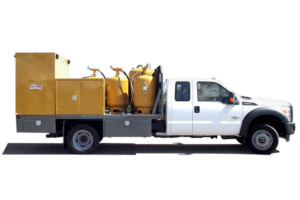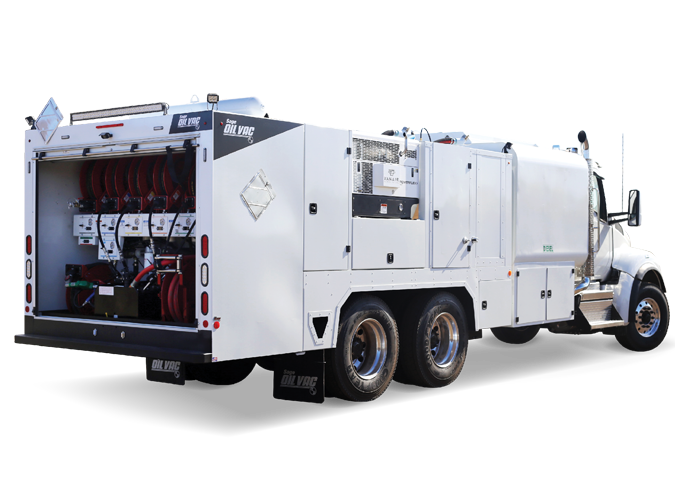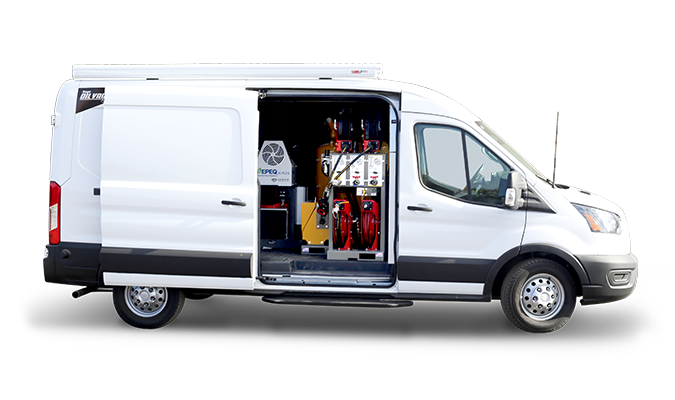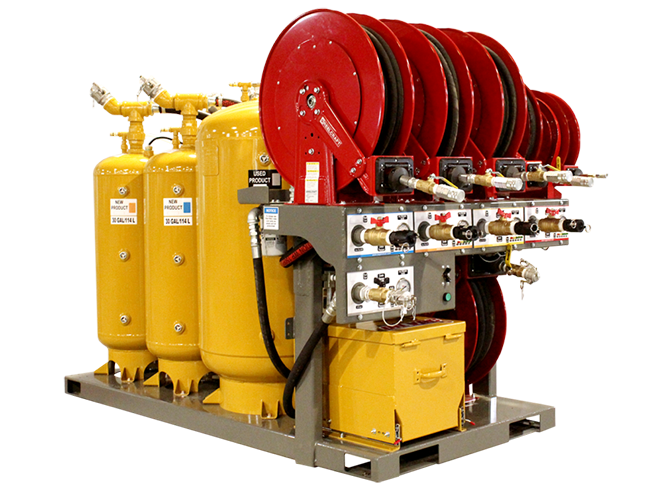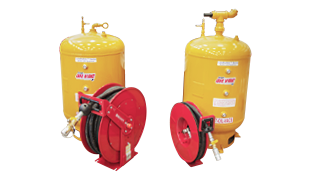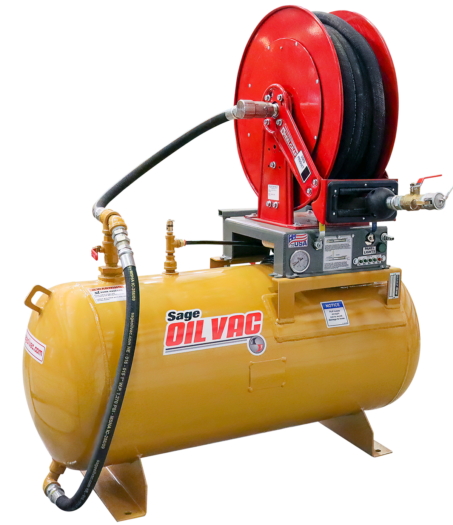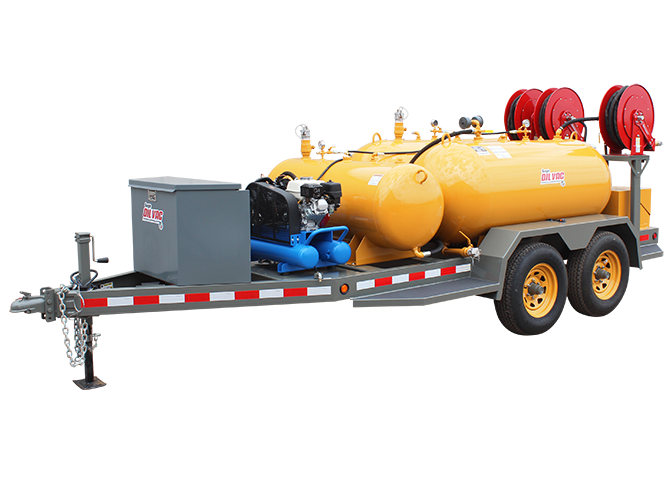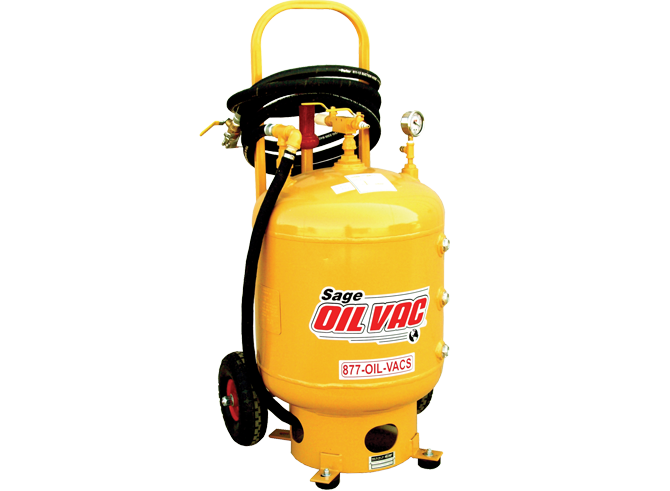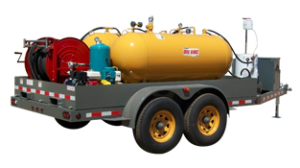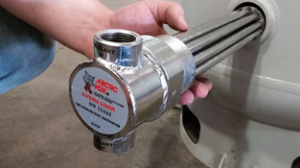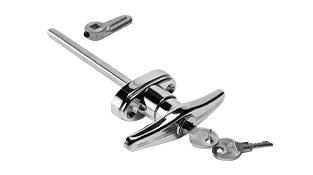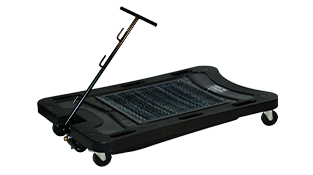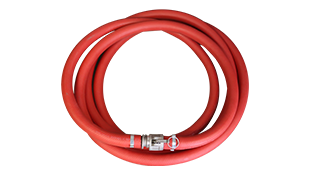When Doug Holmes started his construction business in Lubbock, Texas, all his crew needed to finish construction equipment maintenance was a pickup truck with diesel tank in the back. Ten years and 75 pieces of equipment later, that pickup truck just wasn’t cutting it for the Doug Holmes Construction fleet. Even adding more pickups didn’t help. Holmes and his crew needed a new solution for efficient fuel and service — and they found it with a Sage Oil Vac Class 7 Fuel/Lube Body.
“When it showed up, it was every bit as good as we’d hoped it would be.”
– Doug Holmes, President of Doug Holmes Construction
Servicing heavy equipment out of a pickup
The Doug Holmes Construction crew works on projects across West Texas, from new construction to road construction. Their specialties include dirt work, concrete and asphalt. According to Holmes, there’s plenty of work to go around in Lubbock and the surrounding areas.
With construction work comes the need for heavy equipment — and with heavy equipment comes maintenance needs. In the beginning, Holmes’ team was able to fuel and service equipment out of a pickup. Then a fleet of pickups. After a while, even that wasn’t enough. Today, they need to move up to 800 gallons of fuel daily.
“We started out being a small business and as our business needs grew, we outgrew the ability to service and fuel our equipment,” Holmes said.
Holmes knew they needed something different to get the job done. In every other part of the business, state-of-the-art equipment and technology were helping Holmes and his crew get an edge over the competition. It was time to bring the fuel and maintenance equipment up to speed.
The search began at CONEXPO 2020. Holmes and his son — who works for the family business — were on the lookout for a truck that could help streamline maintenance. After walking the massive show floor and connecting with different brands, they found a Class 7 FL7120S Fuel/Lube Body from Sage Oil Vac to be the best fit.
Simplifying construction equipment maintenance
The difference between their old setup and the new setup was clear as soon as the new Class 7 work truck arrived on site.
“When it showed up, it was every bit as good as we’d hoped it would be,” Holmes said. “We were really excited to be able to expand the ability to grow and to make life much easier than what we had been dealing with for the last few years.”
Before adding their Sage Oil Vac truck, it took three workers to keep up with fuel and service demands across the fleet. With the new addition, one person can maintain the fleet. Today, that’s Nick Balderama. The service tech for Doug Holmes Construction is out in the field every day with the Class 7 truck.
“There’s never a minute that I’m not busy throughout the day working here,” Balderama said. “This truck really helps me get a lot done each day because it has all of the fluids that I could possibly need.”
Outfitted with a 1,000-gallon diesel tank and five product tanks, the Class 7 Fuel/Lube Body can handle everything from DEF to hydraulic oil. In fact, it includes a 60-gallon DEF tank. That helps Balderama be more productive without frequent trips to the shop. But it’s not just the capacity of the vehicle that keeps things moving efficiently. The size of the truck offers an advantage too. Redesigned to include a shorter tank and wheelbase, the Class 7 Fuel/Lube Body helps crews like Doug Holmes Construction navigate jobsites.
“With this truck, I can actually roll right up to wherever I need to be to service a piece of equipment, whereas if it were a little bit larger, sometimes I would have to just post up somewhere and let that equipment come to me,” Balderama said.
Service beyond the sale
When Holmes selected Sage Oil Vac equipment to help streamline construction equipment maintenance, he found a partner invested in keeping their mobile lube equipment up and running.
“They have been extremely easy to work with. Anytime that we have a problem, they take it to heart. They get us stuff as quickly as we can,” Holmes said. “They know that we’re running one big truck that services a whole lot of equipment and they’ve been able to keep our uptime running, and they’ve made life very smooth and easy for us for the last two years.”
Learn more about the Class 7 truck Doug Holmes Construction trusts to keep their operation ahead of the game.
Warmer temperatures and longer days can only mean one thing. The busy season is almost here for preventive maintenance professionals. Are you ready for it? If you’re not stocked up on the preventive maintenance parts you need, the answer is probably not. Fortunately, you can implement a parts management strategy to help your operation get — and stay — ready for whatever the season throws at you. After all, downtime is money out the window. Here are five steps that can help keep your crew on track.
Before you do anything else: Implement a consistent preventive maintenance program
The more consistent you are with your equipment maintenance program, the easier it will be to manage your parts inventory. No more wondering which preventive maintenance parts you have on hand. Your crew will be so familiar with your process and inventory that they won’t even need to look it up in your records — even though it never hurts to double check.
Now, on to the other steps your operation can take.
Step 1: Start with a look back
Does your operation keep a record of the parts you’ve ordered in the past? That could be the key to streamlining the ordering process this year. Keep an eye on which parts pop up frequently in your records. Those are likely the ones your operation uses the most often — and are likely useful to always have on hand. After all, there’s nothing worse than not having the right part in your inventory. It puts your work on hold and can disrupt your busy schedule.
Step 2: Go through your current supplies
Have limited records? You can also get an idea of what parts you need by taking a thorough look through your current inventory. This is also the perfect time to update your inventory list — or get one started. The more up to date your list is, the more confident you can be when ordering additional parts.
Step 3: Figure out usage rates
Once you know which preventive maintenance parts you need, you’ll want to know the quantity to keep on hand. The most accurate way to make that happen is to calculate usage rates. For each type of part, consider how frequently it must be changed and the factors that impact that timeline. Those could include the season and jobsite conditions Then, think about how many pieces of equipment will need service for that part.
Take an engine oil filter for example. You could be changing that filter every 250 hours on each piece of equipment. Do you have enough wear parts on hand to keep up with that demand?
Step 4: Create an inventory buffer
You know what they say about the best laid plans. Even if you’re planning ahead, calculating what you need and keeping inventory on hand, a lead-time or delivery issue could mean you don’t have the preventive maintenance parts you need when you need them. Especially if you’re only keeping exactly what you think you need on hand.
With an inventory buffer, you’ll always have a few more parts than you think you need. They’ll come in handy if supply chain issues threaten to interrupt your workflow.
Step 5: Track inventory levels
Even if you have a feeling you know what your equipment fleet will need during the busy season, make the next year even easier with consistent inventory tracking. Whether you keep track on paper or through an inventory management system, you’ll start to understand your needs in the long term. The more information you collect over time, the more accurate your predictions will be for your preventive maintenance parts.
Streamline the parts-buying process
Once you know what you need for the busy season, you’ll want an easy way to stock up. When it comes to your Sage Oil Vac equipment, we make it easy. Order everything you need online, and we’ll ship it right to your door. It doesn’t get better than that. We have everything you need to keep your preventive maintenance equipment ready to go, from wear parts to lube carts — not to mention exclusive accessories to make the fluid exchange process cleaner, safer and faster. Start shopping today.

